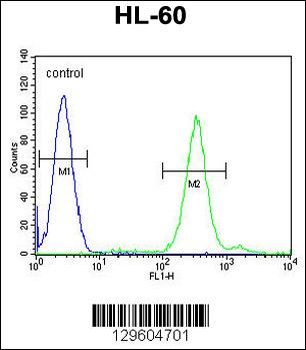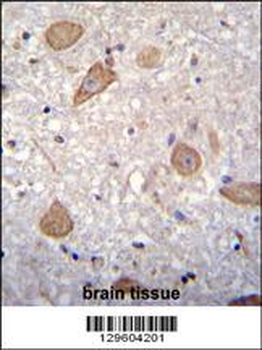You have no items in your shopping cart.
CNIH2 Antibody (N-term)
Catalog Number: orb1439207
| Catalog Number | orb1439207 |
|---|---|
| Category | Antibodies |
| Description | Rabbit polyclonal antibody to CNIH2. |
| Target | CNIH2 |
| Clonality | Polyclonal |
| Species/Host | Rabbit |
| Isotype | Rabbit IgG |
| Conjugation | Unconjugated |
| Reactivity | Human |
| Predicted Reactivity | Mouse, Rat |
| Form/Appearance | Purified polyclonal antibody supplied in PBS with 0.09% (W/V) sodium azide. This antibody is purified through a protein A column, followed by peptide affinity purification. |
| Immunogen | Synthetic Peptide |
| UniProt ID | Q6PI25 |
| MW | 18931 |
| Tested applications | FC, IF, IHC-P, WB |
| Dilution range | IF: 1:10~50, WB: 1:1000, IHC-P: 1:10~50, FC: 1:10~50 |
| Antibody Type | Primary Antibody |
| Clone Number | RB29604 |
| Storage | Maintain refrigerated at 2-8°C for up to 2 weeks. For long term storage store at -20°C in small aliquots to prevent freeze-thaw cycles |
| Alternative names | Protein cornichon homolog 2, CNIH-2, Cornichon fam Read more... |
| Research Area | Infectious Disease & Virology, Signal Transduction |
| Note | For research use only |
| NCBI | NP_872359.1 |

CNIH2 Antibody (N-term) flow cytometric analysis of HL-60 cells (right histogram) compared to a negative control cell (left histogram). FITC-conjugated goat-anti-rabbit secondary antibodies were used for the analysis.

CNIH2 Antibody (N-term) immunohistochemistry analysis in formalin fixed and paraffin embedded human brain tissue followed by peroxidase conjugation of the secondary antibody and DAB staining. This data demonstrates the use of CNIH2 Antibody (N-term) for immunohistochemistry. Clinical relevance has not been evaluated.

CNIH2 Antibody (N-term) western blot analysis in HL-60 cell line lysates (35 ug/lane). This demonstrates the CNIH2 antibody detected the CNIH2 protein (arrow).

Confocal immunofluorescent analysis of CNIH2 Antibody (N-term) with U-251MG cell followed by Alexa Fluor 488-conjugated goat anti-rabbit lgG (green). DAPI was used to stain the cell nuclear (blue).
CNIH2 Antibody (N-term) (orb1439207)
Participating in our Biorbyt product reviews program enables you to support fellow scientists by sharing your firsthand experience with our products.
Login to Submit a Review

